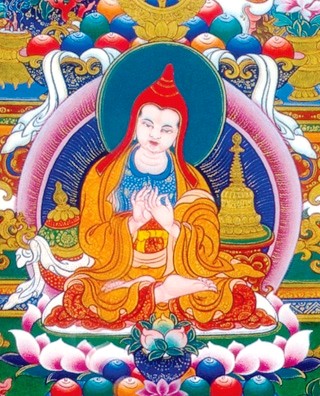Lojong: Difference between revisions
Jump to navigation
Jump to search
No edit summary |
mNo edit summary |
||
| Line 1: | Line 1: | ||
[[image:Atisha.JPG|frame| | [[image:Atisha.JPG|frame|Jowo Jé Glorious [[Atisha]]]] | ||
'''Lojong''' | '''Lojong''' ([[Wyl.]] ''blo sbyong'') — literally ‘training the mind’, or ‘transforming the mind’. These teachings, which emphasize the practice of [[bodhichitta]] and especially [[relative bodhichitta]] and the 'exchanging oneself for others', were introduced to Tibet by Lord [[Atisha]] in the eleventh century. Unlike the [[lamrim]] teachings, which were also introduced by Atisha at the same time, and which can be practised by anyone, the lojong teachings are intended primarily for disciples of the highest capacity and were not taught widely until the time of [[Geshe Chekawa]]. | ||
==Internal Links== | ==Internal Links== | ||
Revision as of 18:52, 3 November 2010

Lojong (Wyl. blo sbyong) — literally ‘training the mind’, or ‘transforming the mind’. These teachings, which emphasize the practice of bodhichitta and especially relative bodhichitta and the 'exchanging oneself for others', were introduced to Tibet by Lord Atisha in the eleventh century. Unlike the lamrim teachings, which were also introduced by Atisha at the same time, and which can be practised by anyone, the lojong teachings are intended primarily for disciples of the highest capacity and were not taught widely until the time of Geshe Chekawa.